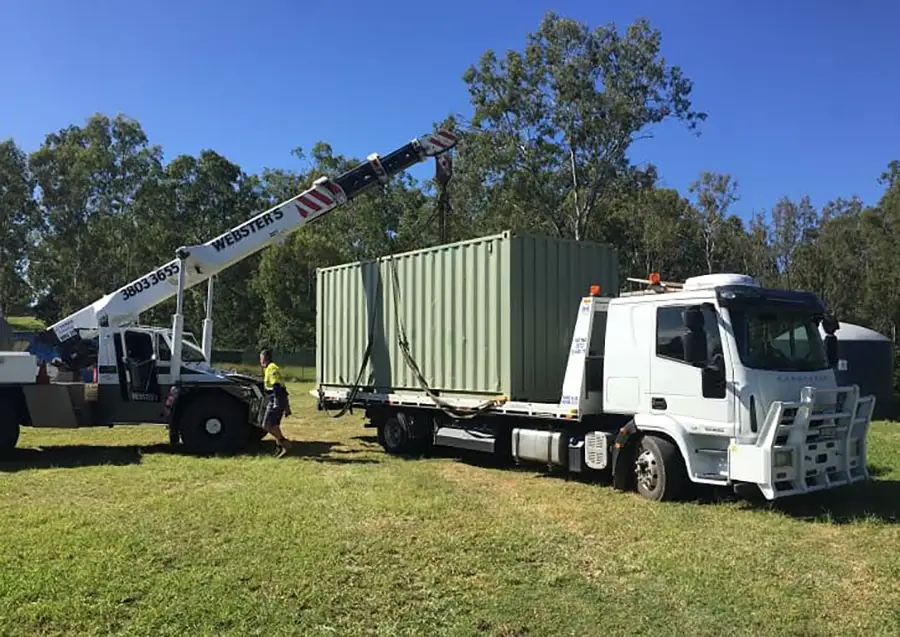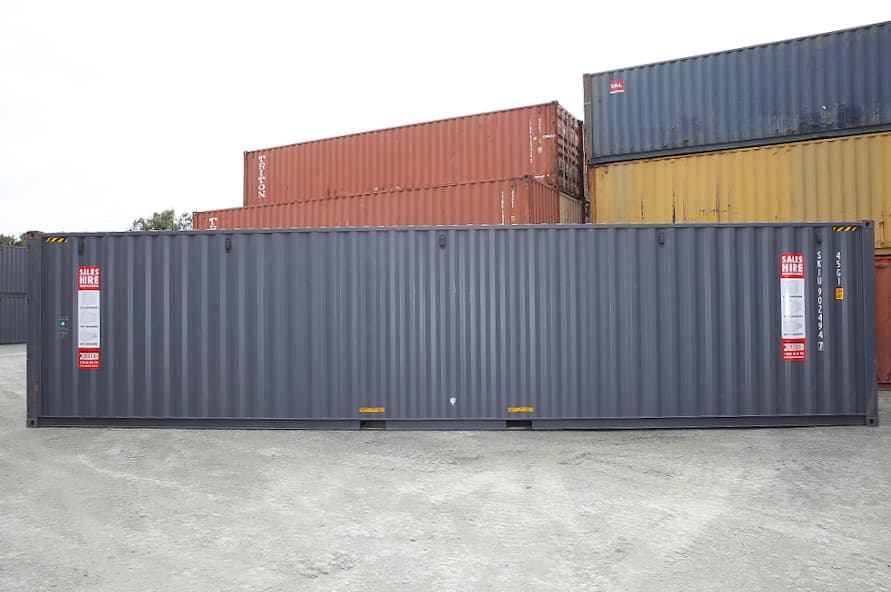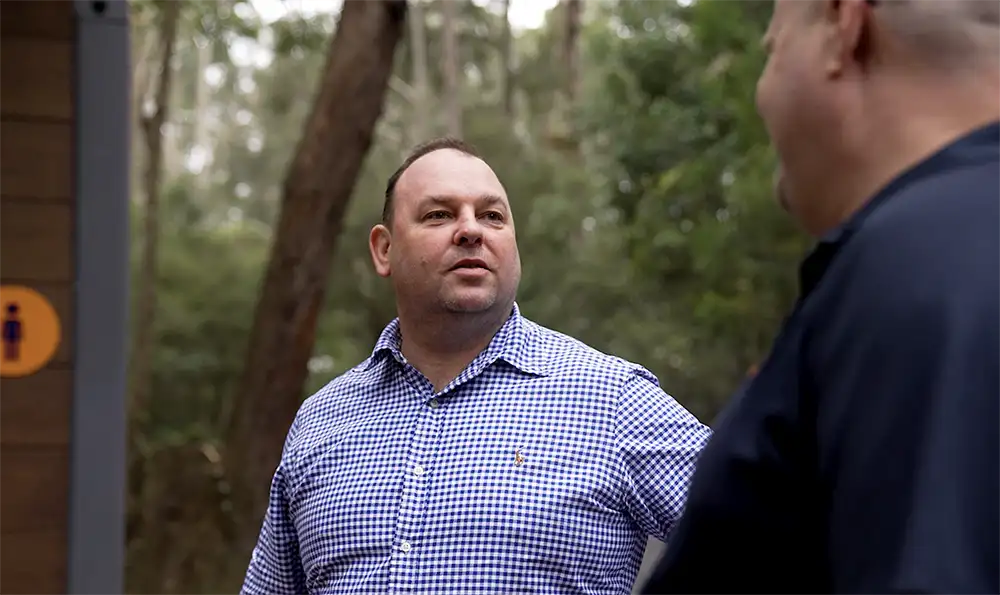
Focused on customer care, not sales.
![]() 4.8 Stars from + reviews
4.8 Stars from + reviews
Fast Container
Delivery
Australia wide Solutions
Best Value for Every Budget

How Much Does Delivery Cost?
Delivery pricing depends on your location and the required delivery speed. Whether you’re renting or buying, we calculate the cost based on the distance from our depot to your site, and always aim to offer the most cost-effective option, including backload rates when available.
All delivery fees are included in your quote unless you opt to pick up the container yourself.
Estimated delivery costs
Inner Metro Areas (Within 30 km of a capital city port)
Regional / Distance-based delivery

We have the perfect truck for your location
Delivery depends on your property, container type, and truck availability.
Container Traders ensures a safe, cost-effective solution every step of the way.
1. Tilt Tray
Tilt trays are the main delivery method for 10ft and 20ft Containers, unloading from the truck’s rear by tilting the tray onto a flat surface. Be sure to confirm your preferred door orientation with our team before loading.
Note: For 40ft Containers, super tilt trays can be used where available. Tilt Tray trucks can also transport trailers, allowing two 20ft Containers to be delivered at once.
Tilt-Tray Specifications
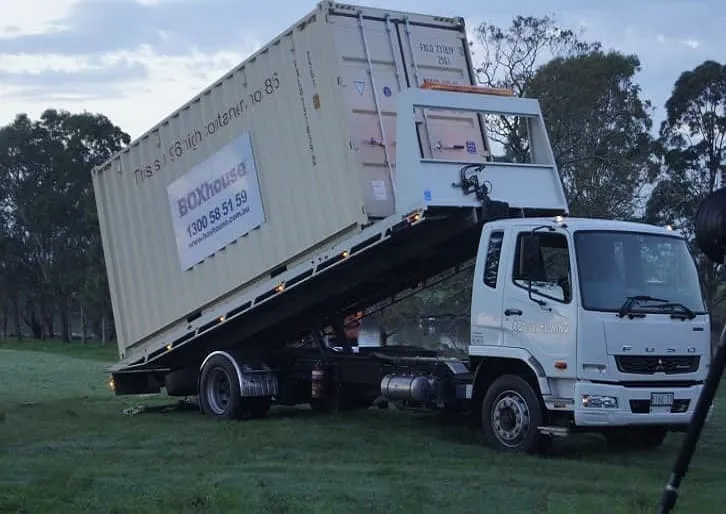

2. Side Loader
A side loader is a semi-trailer which uses a swing lift at either end of the trailer, or tray to pick up, using the containers strong robust corner casts to offload.
Note: Side loaders are generally a more expensive delivery option than a tilt tray.
Side Loader Specifications

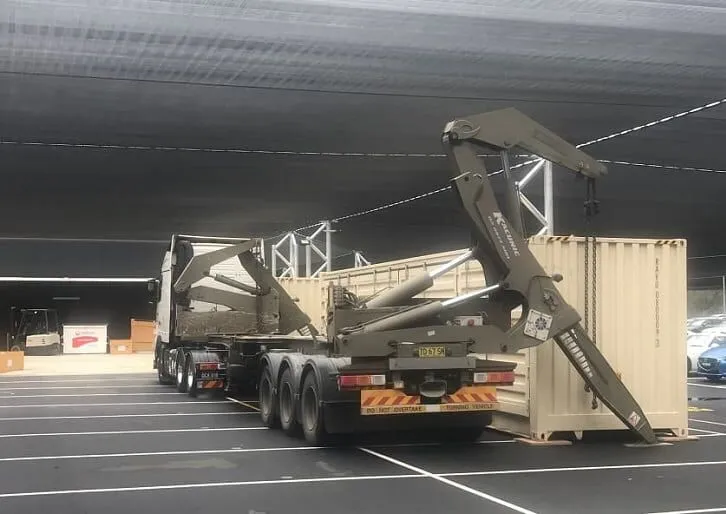
3. Hiab
Hiab trucks feature a crane at the front or rear, enabling precise container placement in hard-to-reach areas. They can lift containers over small obstacles like low fences and accommodate 10ft, 20ft, and 40ft sizes, though weight limits apply.
Note: Whenever possible, Container Traders uses tilt trays or side loaders, as HIAB deliveries tend to be more expensive.
HIAB Specifications
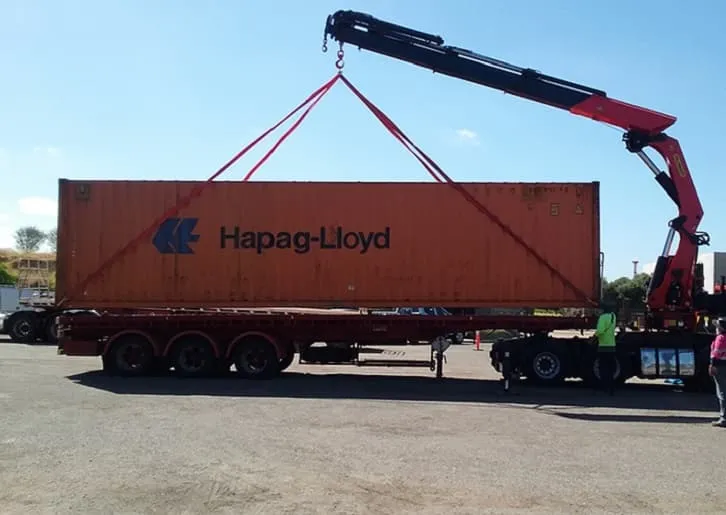

4. Flatbed / Semi Trailer
Flatbed trucks are widely available across Australia and often provide the most cost-effective delivery option. However, unloading requires a forklift or crane at the delivery site.
Note: For customers with onsite unloading capabilities, we can arrange flatbed delivery. For longer distances, a flatbed can handle most of the journey, with a tilt tray, side loader, or Hiab completing the final leg if a crane isn’t available.
Flatbed Specifications
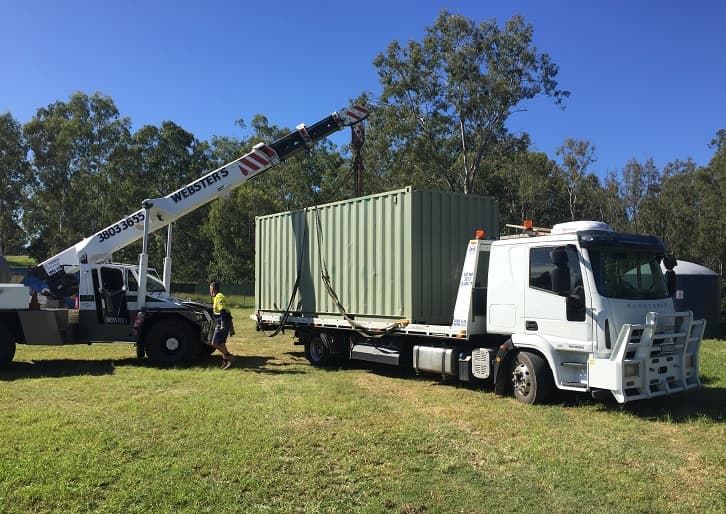
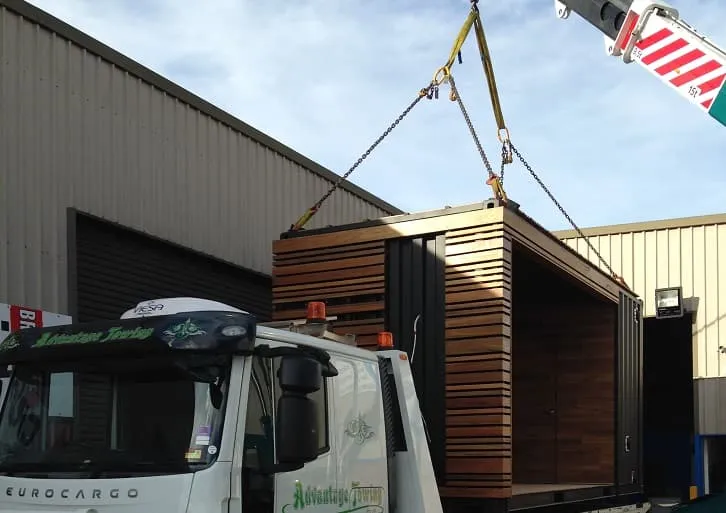

Options for Container Placement
A stable, level surface is key for safe container delivery. Concrete, hardstand, or level gravel/blue rock works best.
Dry, trimmed grass is acceptable with support, such as treated timber blocks, and at least 5cm elevation for airflow.
Surface conditions may affect the truck type needed.
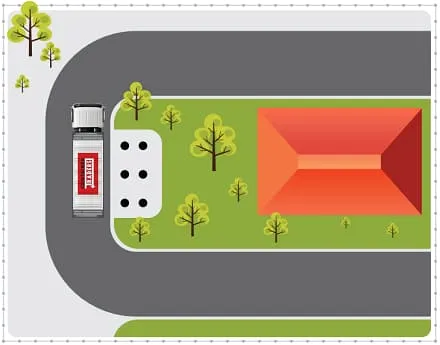
Limited space in front or behind the delivery area
In tight spaces, a side loader lifts the container from the truck’s side and places it securely beside the vehicle.

Angled placement or obstacles to lift over
For angled placements or when obstacles are in the way, a Hiab crane is used to safely position the container on the landing pad.

Available space in front or behind the container placement
If there’s enough space, a tilt tray unloads the container and lets the truck drive forward smoothly.





